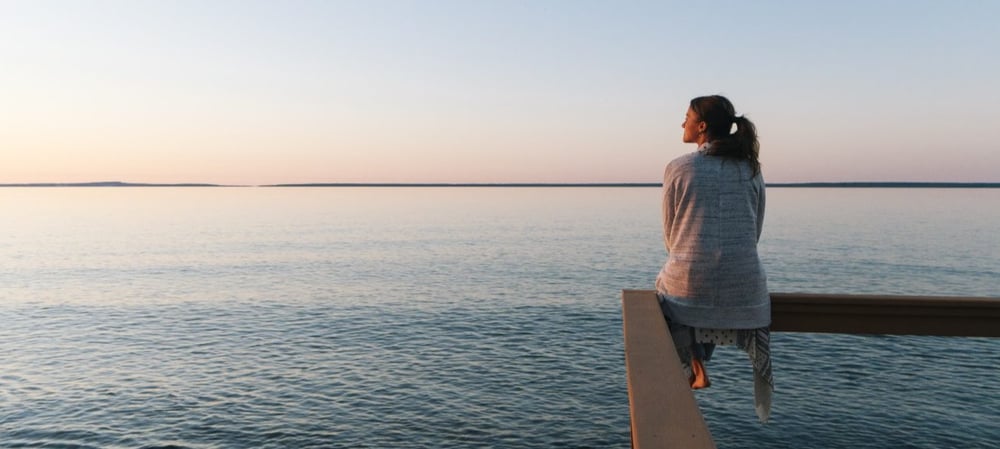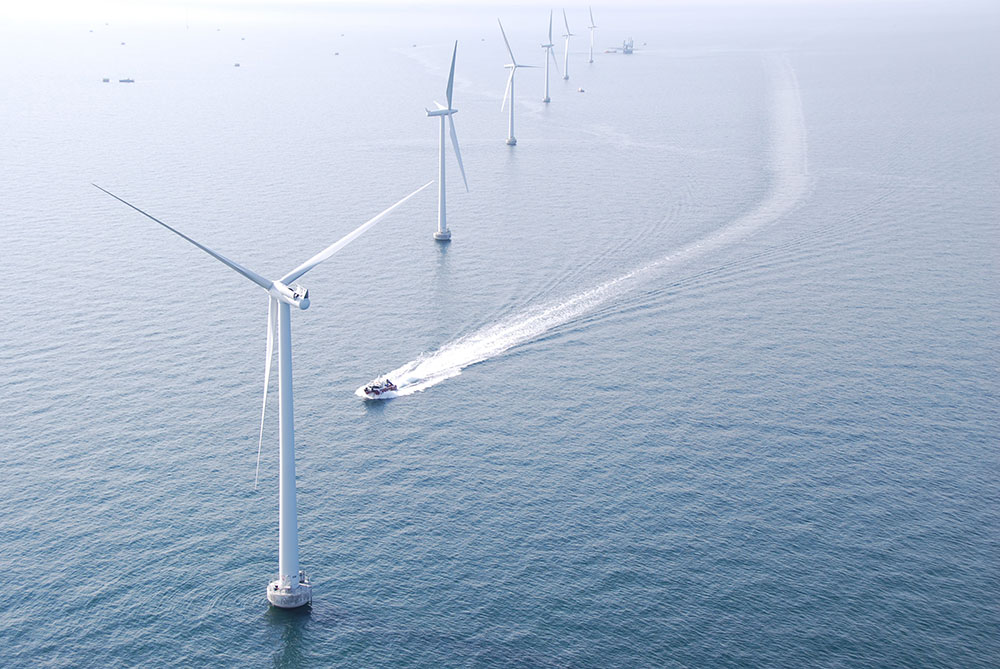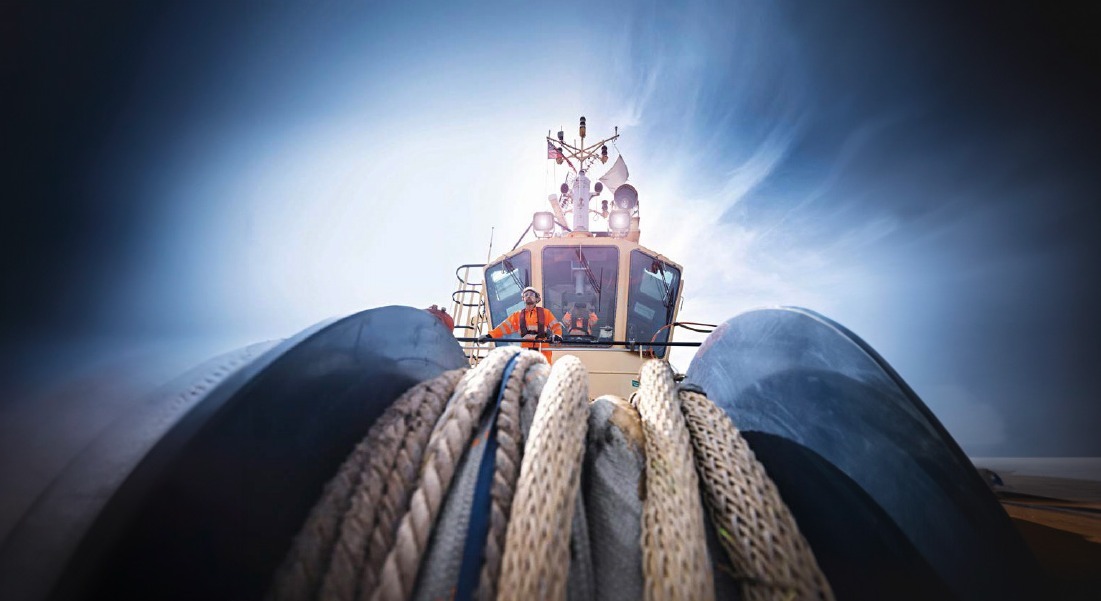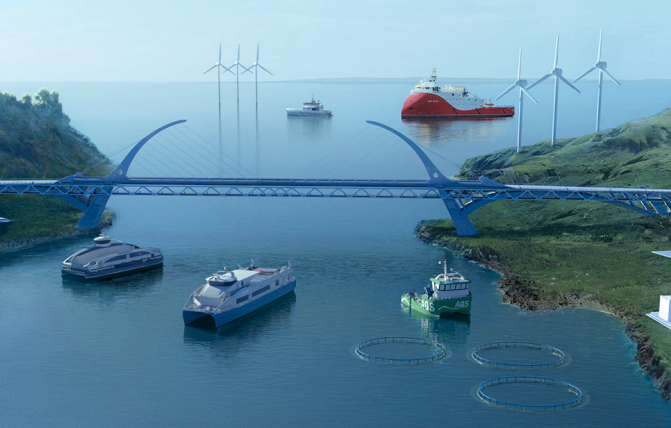
How to select your supplier
About The Author
Eirik Nesse - Director of Marine Propulsion at BOS Power.
He holds a BsC in Electronics from University of Stavanger and has over 25 years’ experience from the international telecom industry, holding various positions at the microwave supplier Nera/Ceragon, lastly as Director of Product Strategy.
Since 2018 he has devoted himself to marine electrification and is an important driver within BOS Power, assuring quality and technical excellency in marine hybrid and fully electric power and propulsion systems.

Intended audience
This paper is written for professionals within the maritime industry, who wish to gain further knowledge on technologies related to electrification for marine vessels.
It may also be read by professionals of adjacent industries who wish to get an introduction to the issues facing decarbonisation of light/fast crafts in the maritime sector.
Executive Summary
We are standing on a pivotal point in the marine industry. On the one side you have flag nations goals of reducing emissions and promotion of greener solutions at sea. On the other, you find solutions available for electrification, their benefits, and limitations.
Despite local tax and market incentives, the fact is that you can’t simply replace your diesel propulsion-system with some batteries and an electric motor.
Electric and hybrid solutions in the maritime sector require a new set of considerations and design principles for your vessel or fleet. Furthermore, class societies are still establishing safety regulations, standards, and certifications. But our emissions must go down, and despite some limitations, electric solutions are the way forward.

Although it’s a global issue, reduction of these emissions starts with local solutions. Local governments should help drive the development and implementation of low to zero emission power solutions with the means they have available. The private sector also plays an important role adopting zero-emission solutions and adapting their operational model to this new technology
Therefore, we strive to inform and educate on the technology available today, as well as emerging products, within hybrid and electric solutions at sea. This keeps us at BOS Power on our toes and able to provide the very best of tailored vessels, optimized for efficiency and lower emissions. It also contributes to build a knowledge base for realistic and pragmatic policy making in the future.
The future is electric and even though both the technology, regulatory bodies, and the industry must mature into this new paradigm, we are more than optimistic for what the future holds.
The sustainable solutions that we implement today are crucial for the environmental challenges we face, but also lay the foundation of new business models, industries, and services.
Introduction
Acquisition of a new vessel is a big decision. You not only have to consider your capital expenditure today, but also its operational cost years and even decades ahead
Markets change, regulations evolve, and public opinion on the sustainability of industrial infrastructure now has a centre seat in the boardroom. Therefore, it’s important to select a supplier for your fleet or vessel that can follow you along on this journey, making sure you get the best possible return on your investment.

WHAT TYPES OF SUPPLIERS ARE AVAILABLE?
In the sphere of marine power and propulsion solutions there are three main types of actors. There are some overlap and cooperation between them, but you’ll find differences in how they approach a commission, both before and after delivery.
COMPONENT MANUFACTURERS
These are companies that specialize in providing single components and technology for the industry and now also may provide complete solutions built around their own technology. Limiting the length of the supply-chain can lead to a lower upfront cost, however, post-sales service and maintenance setup can be limited.

SPECIALIZED SYSTEM INTEGRATORS
As the name implies, system integrators provide you with both tailored and off-the-shelf solutions based on components from a range of specialist manufacturers. Everything is developed and tested as a complete “System of systems”. They provide solutions “that just work”.
Being the single point of contact for the customer, they also hold all responsibility giving the customer peace of mind and often provide the best service agreements through the lifetime of the vessel.
SHIP DESIGNERS AND YARDS
Ship designers and yards can also act as system integrators, providing you with both tailored and off-the-shelf solutions. A challenge for ship designers and yards can be capacity and after sales support. It can be a slow process.
Their business model is built around production of new vessels, more than lifecycle maintenance and service. Once your vessel has left their facilities, a new project will take up the space and focus.
Why Choosing The Right Supplier Is Crucial?
This is only an outline of attributes you will find at different suppliers. We will elaborate upon this through this guide to provide a more cohesive picture.
How your various needs combine is what should be the foundation of your choice. All these actors can provide you with a ship or vessel that fits your specifications, but we all know that is only the beginning of your vessel’s journey. They all have their strengts and weaknesses which you must consider, in terms of cost, delivery, operation and maintenance.
Based on your organisation’s goals, needs and the vessel(s) intended operation, there are several ways of approaching an acquisition of this size and timescale.
The following questions are developed for you as a technical advisor or acquisition researcher, to make the best possible decision, both in the short- and long-term
UPGRADE
TCO
TAILORED SOLUTIONS
EXPERIENCE
INFRASTRUCTURE
SERVICE
EMISSIONS
Questions To Ask Them, Yourself, And Why
7 questions you need to consider

1. Am I Upgrading Or Building New?
Perhaps the fleet is starting to show its age. Perhaps your organization is considering a retrofit to increase their efficiency or reliability.
You may even have trouble sourcing spare parts or finding available expertise in your area. These are challenges you might be facing and often a determining factor when deciding if you should build new or upgrade your existing vessel.
There are different degrees of upgrades and retrofits. If your propulsion system is good enough for your operational profile and you just need a more advanced automation system, that may indeed be all that your need. But if your operation is also under regulative pressure or expectations from your customers, and you are looking to future-proof your vessel in terms of its environmental footprint, the optimal choice becomes more complex.
Perhaps you are considering a hybrid, or even a fully electric propulsion power system to meet future needs today. And there will always be financial and environmental savings with upgrades/retrofits versus building new vessels.
Unfortunately, with only a few exceptions, can you put a vessel back into the same operation after such major upgrades/retrofits, like electrification. Batteries and electric power systems are heavy, accomodating a different operational profile. It may not even be compatible with your vessel’s hull, in terms of weight and space constraints.

This point can be summarized with a three-sided question:
How many systems/components need to be upgraded, how extensively are they integrated into the vessel´s systems, and to the vessel’s operational profile?
If the answer is a single system, like repowering a vessel with possibly upgrading automation, then a component/tech manufacture with an installation service, or a yard may be sufficient.
However, the interfaces for the systems may not be compatible, which at best causes delays in finding a solution. At worst, it involves large expenses acquiring and implementing a whole new, compatible system.
If you are upgrading or replacing more than one system, or the systems to be replaced are deeply integrated to the vessel’s existing systems and operational profile, inquire with a system intergrator.
An example of such a retrofit would be to implement a hybrid solution on a conventional vessel. This affects systems like bridge systems and power and propulsion control. It can also alter the operational capabilities of the vessel itself, due to the added weight and time/power requirements of charging.
Your diesel powered highspeed vessel may be a perfect candidate for conversion to an electrified short-range shuttle or sightsseing vessel. A displacement car ferry can have the space- and weight-capacity to now operate as a fully electric vessel, clean and with reduced noise.
A good supplier knows what to ask from you in terms of operational profile, your business goals and activities within its region, and clearly advise accordingly.

A good supplier knows what to ask from you in terms of operational profile, your business goals and activities within its region, and clearly advise accordingly.
2. What Is The Experience Of The Supplier?
This question covers the supplier’s area of expertise, how long the supplier has been providing services and products, and the supplier’s experience with your specific industry and operation.
AREAS OF EXPERTISE
The range of solutions a manufacturer or supplier offers often determines how fast they will be outside their comfort zone. The maritime industry uses a wide range of different requirements and standards. There are further differences within various geographic areas. What is required in the Norwegian North Sea won’t be the same as what’s needed in the Mediterranean Sea. That a supplier is familiar with the local conditions and environment in which the vessel will be in operation, is therefore very important. There are also considerations of service infrastructure, which we will get back to later in this guide.
Different markets use different standards of technology. Being familiar with common technologies applied in a vessel’s operation improves lead time on delivery, service and maintenance through the ship’s lifetime. Spare parts and replacements are easier to source and custom tailored solutions are built around solving common operational challenges. It’s therefore quicker for a supplier with experience in the local market to both deliver and provide service in a timely manner.
MARKET EXPERIENCE
New players in the market, like startups or pioneers of emerging technologies, often have ambitious ideas, and tend to enter the market by pushing prices and commissions down. As mentioned, the marine technology industry uses a lot of requirements, standards and certifications, so those who dare enter have talent and experience, even in a young company. Unfortunately, they often lack the experience an/or infrastructure to help you in the long-term. The “move fast and break things” mentality may be sufficient to get a project afloat, but it can be detrimental when trying to keep an operation above water. You are also limited by one supplier of components, as these suppliers will mostly use their own technology
More experienced suppliers have had the time to build up their expertise and systems knowledge through years of testing, extensively knowing their product when manufactured at scale and over time. They have worked with a wider range of solutions, often across different regions, operations and markets.
Moreover, partnerships with other organisations and companies enhance these attributes even further. The ability to quickly step up and have parts and facilities ready to deliver, even for custom tailored solutions, is a must to reduce risk and ensure frictionless operation through the vessel(s) lifetime.
EXPERIENCE WITH AN INDUSTRY AND ITS OPERATIONS
It is absolutely crucial that your supplier understands your operation and activities, and not only the technology and solutions that are utilized. When the supplier understands your specific needs, you know you can rely on timely assistance when needed and the right expertise and equipment onhand, should the need arise. Is your fleet developed around peak season demands and do you have the margins to have a vessel off-hire for months? And if so, when is your peak season? Experienced suppliers with intimate knowledge of your operations are conscious of such details.
For most operations dealing with ‘production’, i.e. executing a committed service for others, downtime of assets can be a costly affair, and is planned for ahead.

3. What Is My Service & Maintenance Options?
The importance of having a supplier that understands your specific operation.
Climate, operational profile, not to mention local regulations and laws, put a range of demands on you as an operator.
Having someone that is familiar with all the different strains your vessel(s) are under provides the security and reliability that any serious actor seeks.
Does the supplier have a service organisation and infrastructure in place in your region? People and technical expertise can be jetted anywhere within days, but what about facilities and spare/ replacement parts? Not only having parts on hand, but a reliable and established supply chain is priceless when it comes to operational stability. Without this, unscheduled maintenance can take months instead of days. Your vessel, technicians, crew, perhaps even a percentage of your operation, stay ashore waiting at a huge expense.
Catastrophic breakdown of an engine does not have to result in months of downtime if the supplier has the right expertise and infrastructure established. Some may even have the resources to have mission critical components in stock upon request. Instead of months, it’s a matter of days before the vessel is back in operation.
The question isn’t so much about ability as availability. For yards/designers, they will have the expertise and facilities for service and repair. However, their focus is on delivery of new builds. A quick turnaround on repairs can be a challenge as their facilities are occupied by the next commission and you are placed in a waiting line.
ISSUE OF RESPONSIBILITY
If a component or system breaks down, who is held responsible? The manufacturer of the part, the vessel designer or the operators themselves?
Here you find one of the key benefits of using a system integrator. Having designed and constructed the whole propulsion system, from bridge to propeller, all responsibility is consolidated with one party. They know the vessel’s installations extensively and have the expertise and facilities for a quick turnaround on repairs. This provides security and reduces risk for the operator, as you always know where the responsibility lies.
In turn, it requires a very high level of quality control from the system integrator, through the entire design and construction process.

4. Do I Need A Tailored Or Off-the-Shelf Solution?
Energy efficiency and optimization is important for your organization and operation.
If energy efficiency and optimization is important for your organization and operation the answer is simple:
A tailored solution is what provides optimal results. With few exceptions, you won’t find the performance, efficiency or safety of a tailored vessel in off-the-shelf solutions.
This becomes more apparent when considering the operational cost of the vehicle. There are many examples of how a tailored hybrid solution cuts fuel consumption by 25 %, while upholding the same operational profile as similarly classed diesel vessels. This is acheived by seeing the ship’s individual components holistically, as one intergrated system.
The will always be exceptions to a rule. With the acquisitions of larger series, especially of general purpose vessels, off-the-shelf solutions can be beneficial. 50 tugs doing various tasks at port may not require optimization of a single operation in terms of efficiency, as for instance a passenger fast ferry/ CTV, or a specialised service vessel.
CERTIFICATIONS
A part of your consideration must be oriented around your specific operation and its region. Many off-the-shelf solutions do not meet safety certifications and regulations under all conditions. What may be accepted on a small yacht or a 12 meter tug with a crew of 4, will not be accepted by inspectors for a passenger vessel carrying 25 people, plus crew, to an offshore rig. There may be a possibility that costs can be cut choosing an offthe-shelf solution, but the decision for a lower capital expense should be based on your operation, and not the other way around. Safety and reliability is crucial at sea, and regulations are also therefore stringent and complex.
Yards and ship designers can lean towards solutions using off-the-shelf parts to keep CAPEX down, but this may not offer an optimal lifecycle cost. You often find more expertise in custom tailored solutions from system integrators.
5. What Is My Available Shore Infrastructure?
Your supplier should be aware of available charging infrastructure, and able to advise on its viability for your operation.
First off, fuel (diesel) infrastructure have been built out for over a century. Operators of diesel vessels rarely have to consider this. These vessels normally require a refill once a week and the worst case scenario is a tank truck driven down to the pier.
When it comes to hybrid and electric vessels, the question becomes faceted. And its not only a question of having a charging system, or if the ship’s operational profile accomodates the required charging time. Whether the port, or even region has the grid capacity to deliver the required charging power is a much bigger challenge and a showstopper for many operators.
As you can build a charging station at the pier, constructing high-voltage infrastructure is a another thing altogether.
For vessels that only need overnight charging it’s less of a challenge. The “trickle charge” required can be facilitated at most locations. However, fully electric fast ferries, sailing high frequency routes, require (high power) fast charging multiple times a day.
You won’t find dedicated megawatt capacity everywhere. Therefore, it’s important to do the research of the options in the region of operation, especially if operating high frequency routes and/or far from urban centers.
There are solutions available even under these conditions. If your vessel requires fast-charging where the grid’s capacity is insufficient, you find one example in Gudvangen, Norway. Here, an operator of an electric sightseeing vessel installed a “Powerdock”. This is a floating barge with a battery bank, slowly charged by the available grid. This power could then be rapidly dumped onto a docked vessel’s batteries, meeting the challenge of limited grid capacity. It also doubles as a depot for the ship’s black/gray water, which is then sent to an onshore sewage treatment plant.


A fast ferry using fast charging multiple times a day can require a dedicated grid connection of 3–5 MW.



6. What Is My Budget/Accepted TCO?
It’s important to not only consider the part cost, your CAPEX, but the vessel’s Total Cost of Ownership (TCO).
Any professional operator carefully considers their vessel’s OPEX, but that doesn’t always go for suppliers.
Yards/designers usually win a contract based on their commission and will therefore try to keep CAPEX to a minimum. The operations and maintenance cost after delivery is legally not of their concern. But a vessel is in operation for years, even decades. If one also take into account the future resell value, it becomes apparent that this might not be the way to go for everyone.
As we mentioned earlier, if fuel (energy)-efficiency, one of the big factors of OPEX, is key for your operation, a tailored solution is the way to go. This can bring the initial investment up, by as much as 30%, but when considering the lifetime of the vessel and its operational cost a slightly higher CAPEX budget starts to make sense. The cheaper options will most often cost more over time. Again, more so when considering the vessel’s future resell value.
Leading into the next and final point of this guide, are the environmental considerations. A more energy efficient vehicle has less emissions. This can be a saviour, both in terms of regulations and taxes, but also the ‘product’s appeal’ on the market.
You will always have make some compromises with investments of this magnitude, but a long-term view of your acquisition provides a more complete picture of the TCO.

7. Why Emission Considerations Are Important
It is important to be forward looking and consider more stringent regulations and fees on harmful emissions.
Intially you may only consider this an aspect for tourist markets benefitting from a silent, odour-free ride in scenic environments. However, considering your emissions and it’s importance, is not even a question in this guide.
Tendencies are showing that the market forces influence and affect operators in terms of their environmental impact. Even the loudest deniers of climate change have taken a step back, and there is no denying that a green shift is progressing worldwide. This resonates through the whole capital chain of marine industries. Public opinion is clear. Banks and financial institutions will be hesitant to provide loans and funding to organisations not considerate of their environmental impact. Governments are less like likely to grant contracts and/or concessions to operations on the same sentiment. Passengers and clients are also less likely to choose what is perceived as a “dirty” option.
It is something we can count on becoming even more prevalent. Fossil energy has been engrained into every industry over the last century and will not be substituted easily. We therefore do what we can. A focus on “doing what we can” involves more stringent regulations and fees on harmful emissions, where they can be applied. More so as time goes on and the global temperature goes up.
Today, some city centres of Europe, like Brussels, do not allow diesel vehicles above a certain emission threshold to enter. This has in turn an impact on the second-hand market. It is not unlikely we will see similar regulations implemented at sea routes and waterways in the future. This has an impact on the bottom line today, as well as the second hand value of your vessel in the future.

Summary & Conclusion
Your operation, your vessel’s operational profile and your location play a role when selecting a supplier for your high speed vessel.
THREE MAIN TYPES OF SUPPLIERS
- Component/tech manufacturers
- Specialized system integrators and
- Designers/yards.
They all have their own attributes, pros and cons. It is important to look at your investment in the long term, and considering your operational costs in light of both today’s and future emission related regulations and taxes.
TAILORED SOLUTIONS
The best way to achieve a high efficiency vessel is by a tailored solution. One of the few exceptions to this might be large orders of general purpose vessels.
UPGRADE
To retrofit a vessel with hybrid or electric power system capabilities is possible, but it changes the craft’s capabilities and fit for the operational profile. There can be a lot to save on upgrading existing vessels, both economically and environmentally. However, you must consider the options available for your assets and your operation.
CHARGING INFRASTRUCTURE
Available charging infrastructure can be a challenge, but also the grid’s capacity to provide suffient power in certain areas. It’s therefore an important consideration if you want a fully electric fleet of vessels. This can be a showstopper for many, and even though there are workarounds and solutions for even the most remote areas, it can have an impact on your ‘production’.
SERVICE & MAINTENANCE
Considerations of the craft’s entire lifecycle are important, and your supplier should be able to provide timely and frictionless service and maintenance on your fleet, at high quality. Some suppliers do not offer the same service agreements as others. Therefore, you should consider this aspect unless your organization has an established service organisation.
We hope that this guide is informative and helpful in your research when finding the best solution for your industry or business.
For a more technical deep dive into hybrid/electric solutions, we recommend checking out our content offer “Electrification of marine vessels” or see our resource center/blog for articles covering both common and overlooked considerations of this industry.
Get in Touch
Do you want to learn more about our solutions or discuss how we can support your next project? Our team of experts is ready to answer your questions and explore opportunities together.- Let’s talk about your needs
- Share your ideas with us
- Start building a sustainable and reliable future today